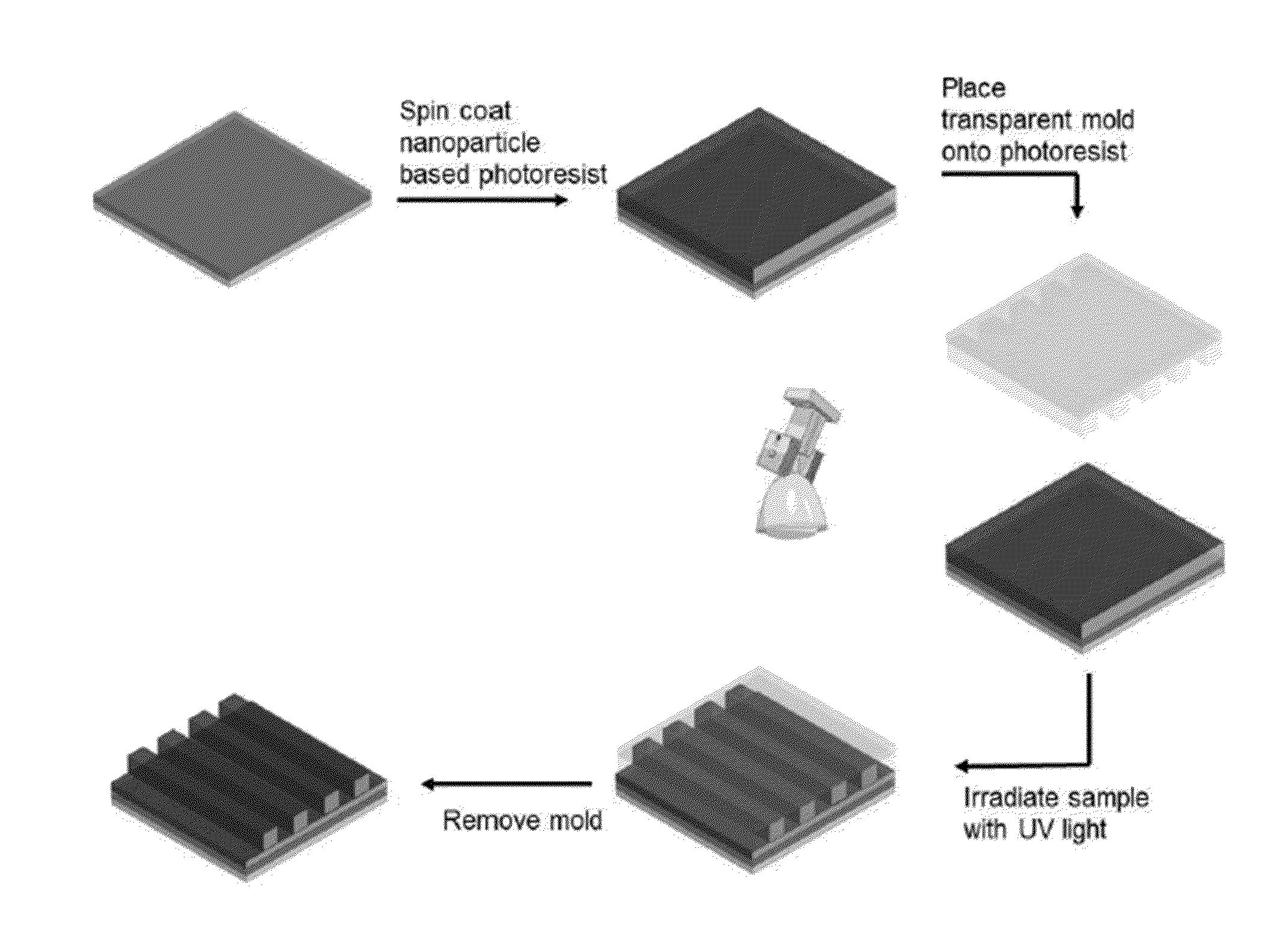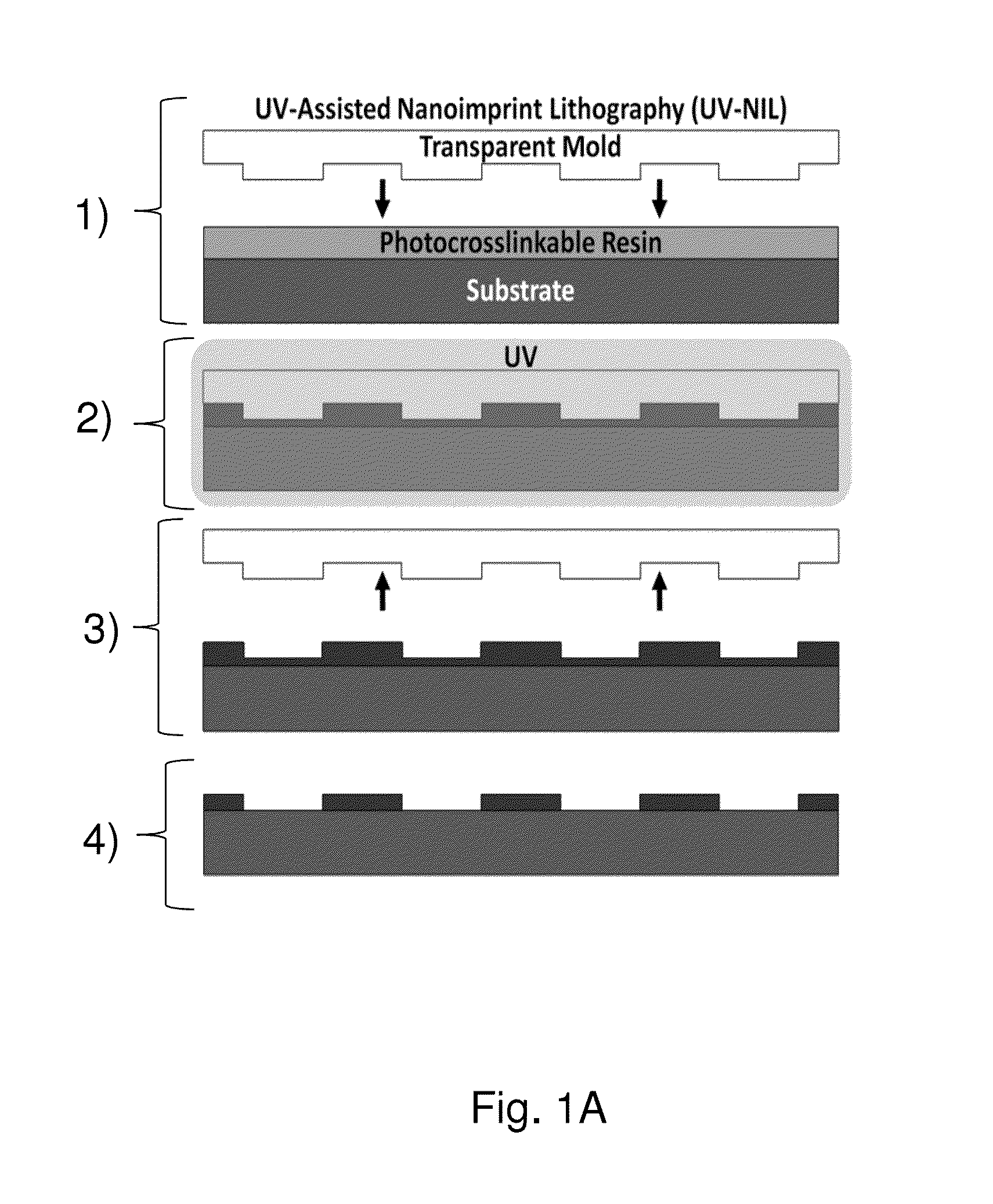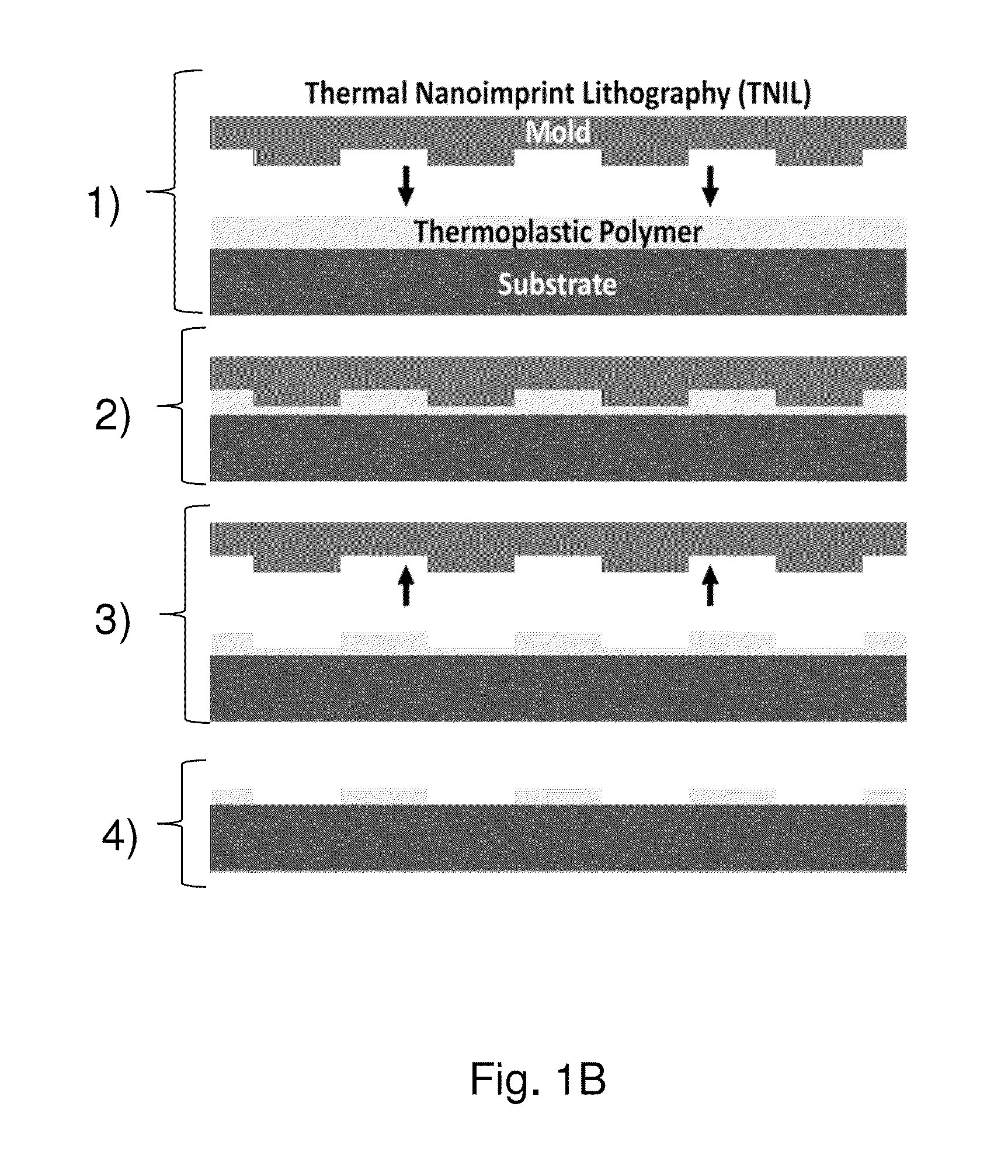Patterned nanoparticle structures
a nanoparticle and nanoparticle technology, applied in the direction of non-metal conductors, sustainable manufacturing/processing, instruments, etc., can solve the problems of limited materials involved in the use of these techniques, limited material types, and limited to large micron scale dimensions
- Summary
- Abstract
- Description
- Claims
- Application Information
AI Technical Summary
Benefits of technology
Problems solved by technology
Method used
Image
Examples
example 1
Solvent Exchange of Metal Oxide Nanoparticles
[0104]A 250 mL beaker was charged with 100 g of the specific acidic or basic metal oxide nanoparticle dispersion or mixed metal oxide nanoparticle dispersion and 50 g each of NMP and MeOH was added. The solvent was then evaporated until most of the residual water was removed. Once the water was removed the solids remaining were diluted to the desired concentration with a 50:50 mixture of NMP and MeOH. The system was subjected to ultra-sonication for 5 minutes to completely re-disperse the nanoparticles into the organic solvents, while maintaining the solution at room temperature with a recirculating water bath. The dispersion after sonication was translucent.
example 2
High Refractive Index Planar TiO2 Hard Coat
[0105]Solvent exchanged titanium dioxide nanoparticles using the procedure from Example 1 (13.2 wt % TiO2 in a 50:50 mixture of NMP:MeOH) was added to a 20 mL glass vial along with a 13.2 wt % solution of NOA60 in NMP in amounts varying from 0 wt % NOA60 to 90 wt % NOA60. The amount of NOA60 that was added was adjusted to obtain the desired refractive index. FIG. 20 illustrates the refractive index versus wavelength of planar patterned nanoparticle nanostructures based on TiO2 (5 nm to 30 nm in particle size) and a commercially available thiol-ene based photoresist (NOA60). The solution was filtered through a 0.2 micron PTFE filter and then spun coat on a substrate (silicon, glass, or plastic, depending on the application) in a low humidity environment at 3000 rpm until no solvent remained (approximately 2 minutes). The coating was then irradiated with 365 nm UV light for 15 min with an intensity of 12 mW / cm2 under a nitrogen environment.
[0...
example 3
Patterned TiO2 Nanoparticle Nanocomposites Using Organic Solvent Dispersible Formulations
[0109]Solvent exchanged titanium dioxide nanoparticles using the procedure in Example 1 (13.2 wt % TiO2 in a 50:50 mixture of NMP:MeOH) was added to a 20 mL glass vial along with a 13.2 wt % solution of NOA60 in NMP in amounts varying from 0 wt % NOA60 to 90 wt % NOA60. The amount of NOA60 was adjusted to obtain the desired refractive index, as can be seen in FIG. 20. The solution was filtered through a 0.2 micron PTFE filter and then spun coat on a substrate (silicon, glass, or plastic, depending on the application) in a low humidity environment at 3000 rpm for 30 seconds and then the mold was placed on top of the substrate with the coating. The coating was then irradiated with 365 nm UV light for 15 min with an intensity of 12 mW / cm2 under a nitrogen environment. The mold was carefully peeled off of the coating and the characteristic diffraction pattern for the particular mold could be seen ov...
PUM
| Property | Measurement | Unit |
|---|---|---|
| particle size | aaaaa | aaaaa |
| thickness | aaaaa | aaaaa |
| width | aaaaa | aaaaa |
Abstract
Description
Claims
Application Information
 Login to View More
Login to View More - R&D
- Intellectual Property
- Life Sciences
- Materials
- Tech Scout
- Unparalleled Data Quality
- Higher Quality Content
- 60% Fewer Hallucinations
Browse by: Latest US Patents, China's latest patents, Technical Efficacy Thesaurus, Application Domain, Technology Topic, Popular Technical Reports.
© 2025 PatSnap. All rights reserved.Legal|Privacy policy|Modern Slavery Act Transparency Statement|Sitemap|About US| Contact US: help@patsnap.com



